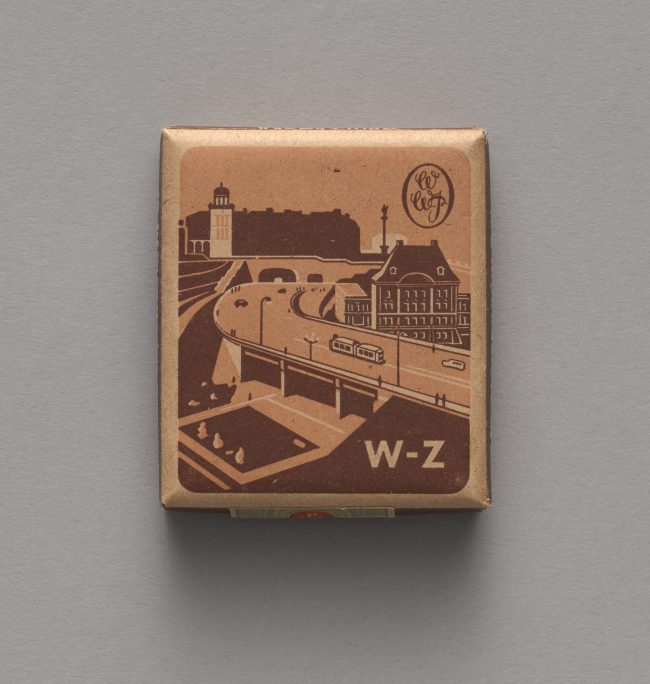
W-Z cigarette pack
The cardboard pack which once held W-Z (East-West) cigarettes, with a preserved excise stamp, provides an outstanding example of design and style that characterised the early 1950s in Poland. Since smoking enjoyed immense popularity, the packs became a vital propaganda carrier. Almost everyone smoked – youth, elderly people, women, intellectuals, workers – and therefore propaganda content could reach a truly wide audience. Immediately after the end of World War II, in 1945 and at the beginning of the 1950s, when the ruined city of Warsaw was undergoing reconstruction, a popular motto read: The entire nation is building its capital city. Cigarette packs were ideal for propagating the idea of the joint effort. The W-Z cigarette pack is a perfect example.
The front face features the new symbol of reborn Warsaw – the W-Z (East-West) Route – depicted synthetically in a two-colour graphic representation. The construction of the thoroughfare was one of the first and largest transport infrastructure projects in Warsaw after the war. The route ran through the districts of Warsaw: Wola, Śródmieście and Praga-Północ (North). Construction works were inaugurated in October 1947 and completed on 22 July 1949, on the National Day of the Rebirth of Poland on the anniversary of the proclamation of the Manifesto of the Polish Committee of National Liberation (1944), which established the Socialist regime in Poland. The image of the W-Z Route was a frequent and probably the most common image used for propaganda purposes. The pack features not only the flyover of the route, but also the Pod Blachą (Tin-Roofed) Palace, which was renovated and opened together with the route, as well as Warsaw’s icons – the Sigismund III Vasa Column, the tower of St. Anne’s Church, and the silhouettes of burgher houses in Castle Square.
W-Z cigarettes pack
WROCŁAW CIGARETTE FACTORY
WROCŁAW; AFTER 1949
CARDBOARD, PAPER, PRINT, FACTORY PRODUCT
MHW 25573
7,1 × 6 × 1,8 CM
Image licensed under: ![]()
